Punkty dostępu
Bezprzewodowe punkty dostępowe Juniper współpracują z usługami w chmurze Juniper Mist oraz Mist AI w celu zapewnienia najlepszych możliwości dostępu bezprzewodowego. Juniper Mist Edge rozszerza zakres mikroserwisów na kampus, aby zapewnić sprawność i skalę, umożliwiając jednocześnie nowe aplikacje na brzegu.
Rozwiązania

Mist Bezprzewodowe punkty dostępowe
Juniper Mist AP24
The Juniper AP24 integrates 802.11ax, Mist AI™, and an omnidirectional Bluetooth LE antenna to automate network operations and boost performance in the 6-GHz band. The Wi-Fi 6E device helps optimize operator and user experiences with secure client-to-cloud automation, insight, and data-driven actions.
Deployment: Indoor
Wi-Fi Standard: 802.11ax (W-Fi 6 / Wi-Fi 6E): 2x2:2
Wi-Fi Tri-Band: Yes (Dual-Band-Concurrent); Dedicated Third Radio
Antenna Options: Internal
Omni BLE: Yes

Mist Bezprzewodowe punkty dostępowe
Juniper Mist AP45
The Juniper AP45 brings the performance and patented virtual Bluetooth® LE (vBLE) technology of the Juniper AP43 to the 6GHz band for enterprises needing increased channel widths and capacity. Juniper AI solutions for Wi-Fi 6E optimize operator and user experiences with secure, near-real-time client-to-cloud automation, insight, and actions.
Deployment: Indoor
Wi-Fi Standard: 802.11ax (W-Fi 6): 4x4:4
Wi-Fi Tri-Band: Yes; Dedicated Fourth Radio
Antenna Options: Internal, External
Virtual Bluetooth LE: Yes

Mist Bezprzewodowe punkty dostępowe
Juniper Mist AP34
The Juniper AP34 integrates Mist AI for AX™ and an omnidirectional Bluetooth antenna to automate network operations and boost performance in the 6GHz band. The Wi-Fi 6E device helps optimize operator and user experiences with secure client-to-cloud automation, insight, and data-driven actions.
Deployment: Indoor
Wi-Fi Standard: 802.11ax (W-Fi 6): 2x2:2
Wi-Fi Tri-Band: Yes; Dedicated Fourth Radio
Antenna Options: Internal, External
Virtual Bluetooth LE: Yes

Mist Bezprzewodowe punkty dostępowe
Juniper Mist AP43
The Juniper AP43 high-performance Wi-Fi 6 (802.11ax) access point integrates patented virtual Bluetooth® LE (vBLE) and Internet of Things (IoT) capabilities to deliver an unprecedented user experiences.
Deployment: Indoor
Wi-Fi Standard: 802.11ax (W-Fi 6): 4x4:4
Wi-Fi Tri-Radio: Yes
Antenna Options: Internal, External
Virtual Bluetooth LE: Yes
IoT Interface: Yes
IoT Sensors: Humidity, Pressure, Temperature
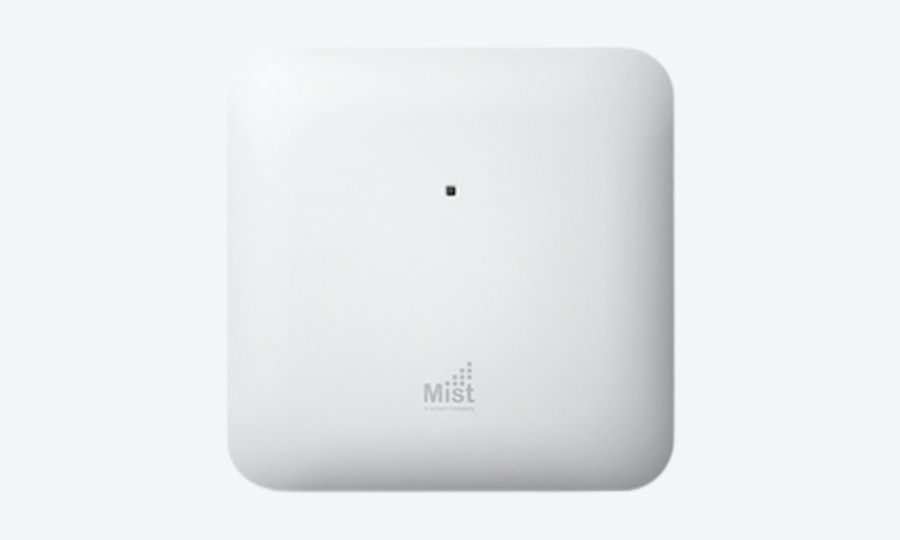
Mist Bezprzewodowe punkty dostępowe
Juniper Mist AP33
The Juniper AP33 access point integrates Mist AI for AX capabilities and a dynamic virtual Bluetooth® LE (vBLE) antenna array to automate network operation and boost Wi-Fi performance.
Deployment: Indoor
Wi-Fi Standard: 802.11ax (Wi-Fi 6); 5GHz: 4x4:4; 2.4GHz: 2x2:2
Wi-Fi Tri-Radio: Yes
Antenna Options: Internal
Virtual Bluetooth LE: Yes
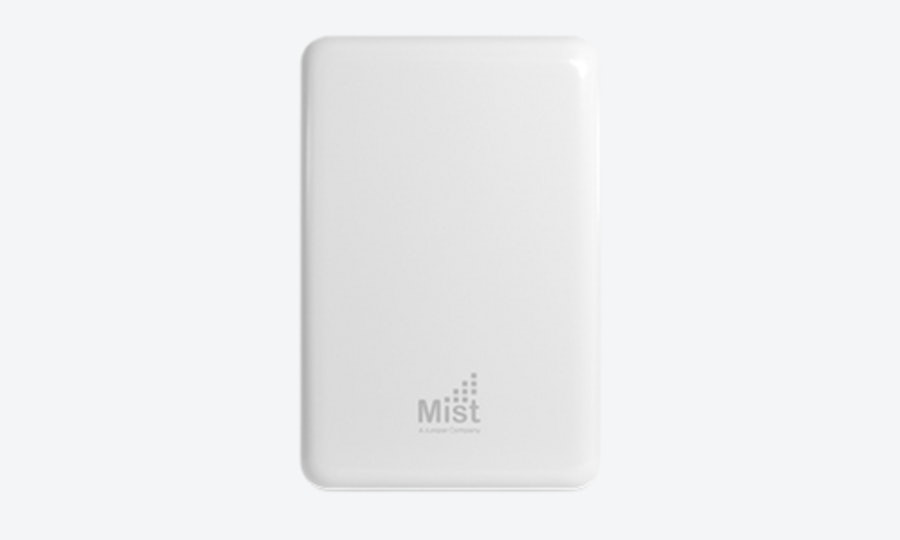
Mist Bezprzewodowe punkty dostępowe
Juniper Mist AP12
The AP12 access point integrates Mist AI for AX capabilities to automate network operation and boost Wi-Fi performance.
Deployment: Indoor
Wi-Fi Standard: 802.11ax (Wi-Fi 6); 2x2:2
Wi-Fi Tri-Radio: Yes
Antenna Options: Internal
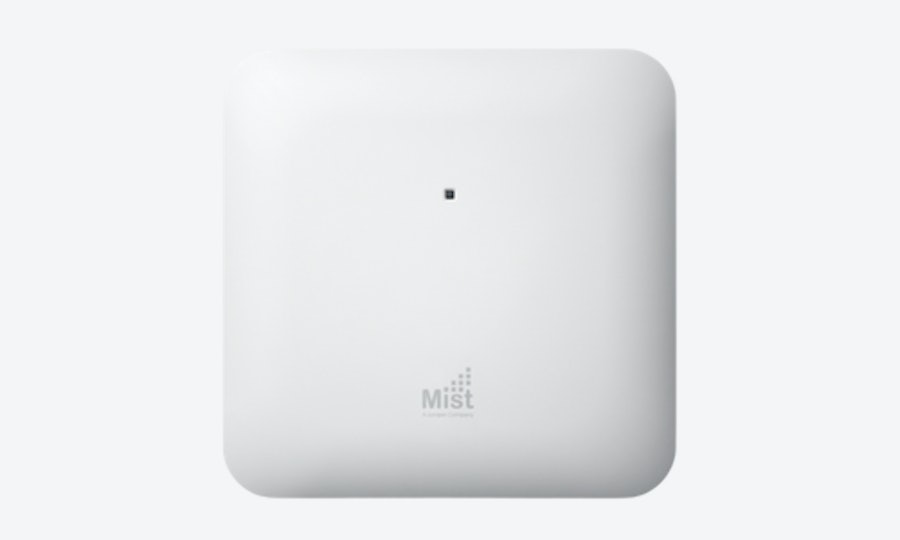
Mist Bezprzewodowe punkty dostępowe
Juniper Mist AP41
The Juniper AP41 series are high-performance 802.11ac Wave 2 access points with integrated patented virtual Bluetooth® LE and Internet of Things (IoT).
Deployment: Indoor
Wi-Fi Standard: 802.11ac Wave 2; 4x4:4SS
Wi-Fi Tri-Radio: Yes
Antenna Options: Internal, External
Virtual Bluetooth LE: Yes
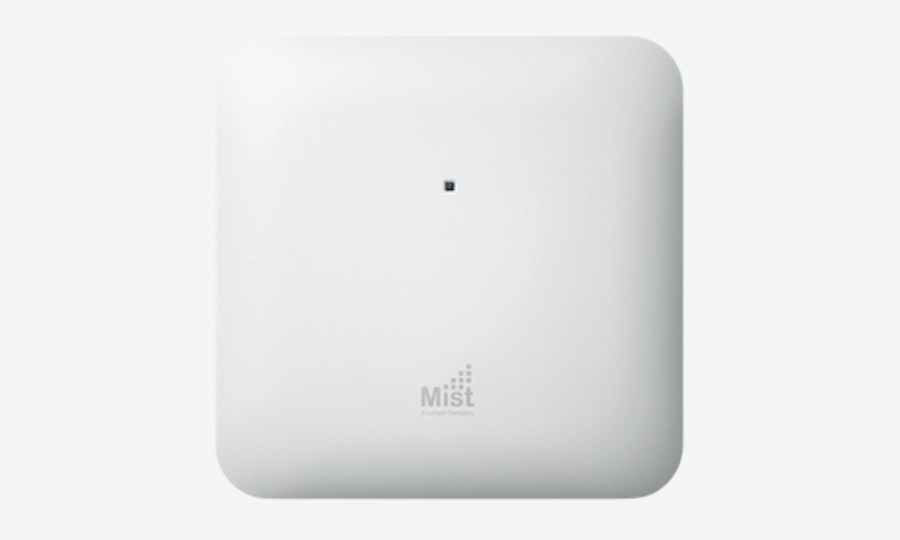
Mist Bezprzewodowe punkty dostępowe
Juniper Mist BT11
The Juniper BT11 is an enterprise-grade access point exclusively for Bluetooth® Low Energy.
Deployment: Indoor
Wi-Fi Standard: N/A
Wi-Fi Tri-Radio: No
Antenna Options: Internal
Virtual Bluetooth LE: Yes
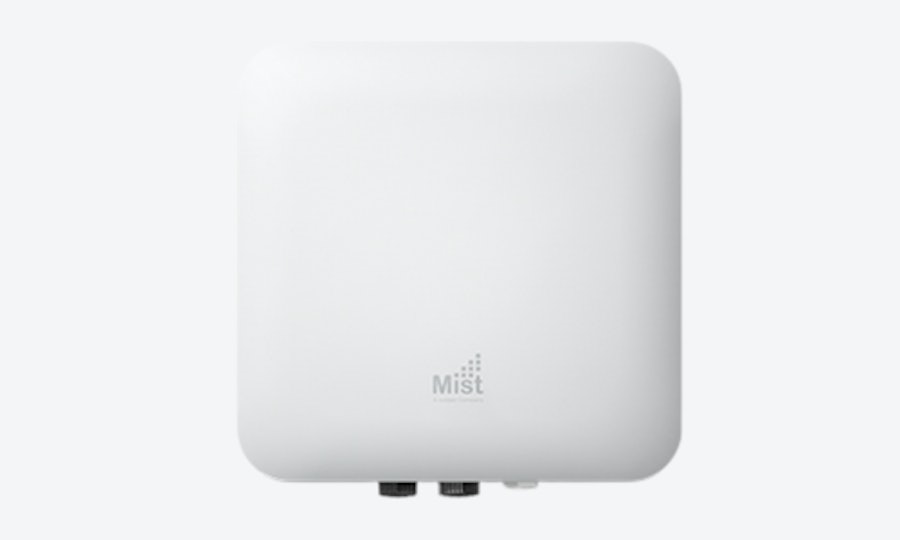
Mist Bezprzewodowe punkty dostępowe
Juniper Mist AP63
The Wi-Fi 6 (802.11ax) AP63 access point offers high-performance Wi-Fi to ensure business continuity and operation efficiency in outdoor environments.
Deployment: Outdoor
Wi-Fi Standard: 802.11ax (Wi-Fi 6); 4x4: 4
Wi-Fi Tri-Radio: Yes
Antenna Options: Internal, External
Virtual Bluetooth LE: Yes

Mist Bezprzewodowe punkty dostępowe
Juniper Mist AP32
The Juniper AP32 access point integrates Mist AI for AX capabilities to automate network operation and boost Wi-Fi performance.
Deployment: Indoor
Wi-Fi Standard: 802.11ax (Wi-Fi 6); 5GHz: 4x4:4; 2.4GHz: 2x2:2
Wi-Fi Tri-Radio: Yes
Antenna Options: Internal, External

Mist Bezprzewodowe punkty dostępowe
Juniper Mist AP61
The Juniper AP61 series are outdoor access points that support 802.11ac Wave 2 Wi-Fi, patented Bluetooth® LE, and Internet of Things (IoT) integration.
Deployment: Outdoor
Wi-Fi Standard: 802.11ac Wave 2; 4x4: 4
Wi-Fi Tri-Radio: Yes
Antenna Options: Internal, External
Virtual Bluetooth LE: Yes

Mist Bezprzewodowe punkty dostępowe
Juniper Mist AP21
The Juniper AP21 is a high-performance access point that supports 802.11ac Wave 2 Wi-Fi and patented virtual Bluetooth® LE.
Deployment: Indoor
Wi-Fi Standard: 802.11ac Wave 2 2x2:2SS
Wi-Fi Tri-Radio: No
Antenna Options: Internal
Virtual Bluetooth LE: Yes

Mist Bezprzewodowe punkty dostępowe
Juniper Mist Edge
Juniper Mist Edge extends our microservices architecture to the campus, bringing agility and scale while enabling new applications at the edge.
Interface
ME-X1: Dual Port 1GbE (Data) and Dual Port 1GbE
ME-X5: Dual Port 10GbE SFP + (Data) & Dual Port 1GbE
ME-X5-M: Quad Port 10GbE SFP + (Data) & Dual Port 10GbE SFP+
ME-X10: Quad Port 10GbE SFP + (Data) & Dual Port 10GbE SFP+
Korzyści
- Najlepsza wydajność Wi-Fi i Bluetooth LE
- Gromadzenie, analiza i egzekwowanie danych
- Zintegrowana platforma dla Wi-Fi, Bluetooth LE i IoT
Potrzebujesz konsultacji eksperta?
Szukasz szczegółów dotyczących cen, informacji technicznych, pomocy technicznej lub niestandardowej wyceny? Nasz zespół ekspertów jest gotowy do pomocy.










